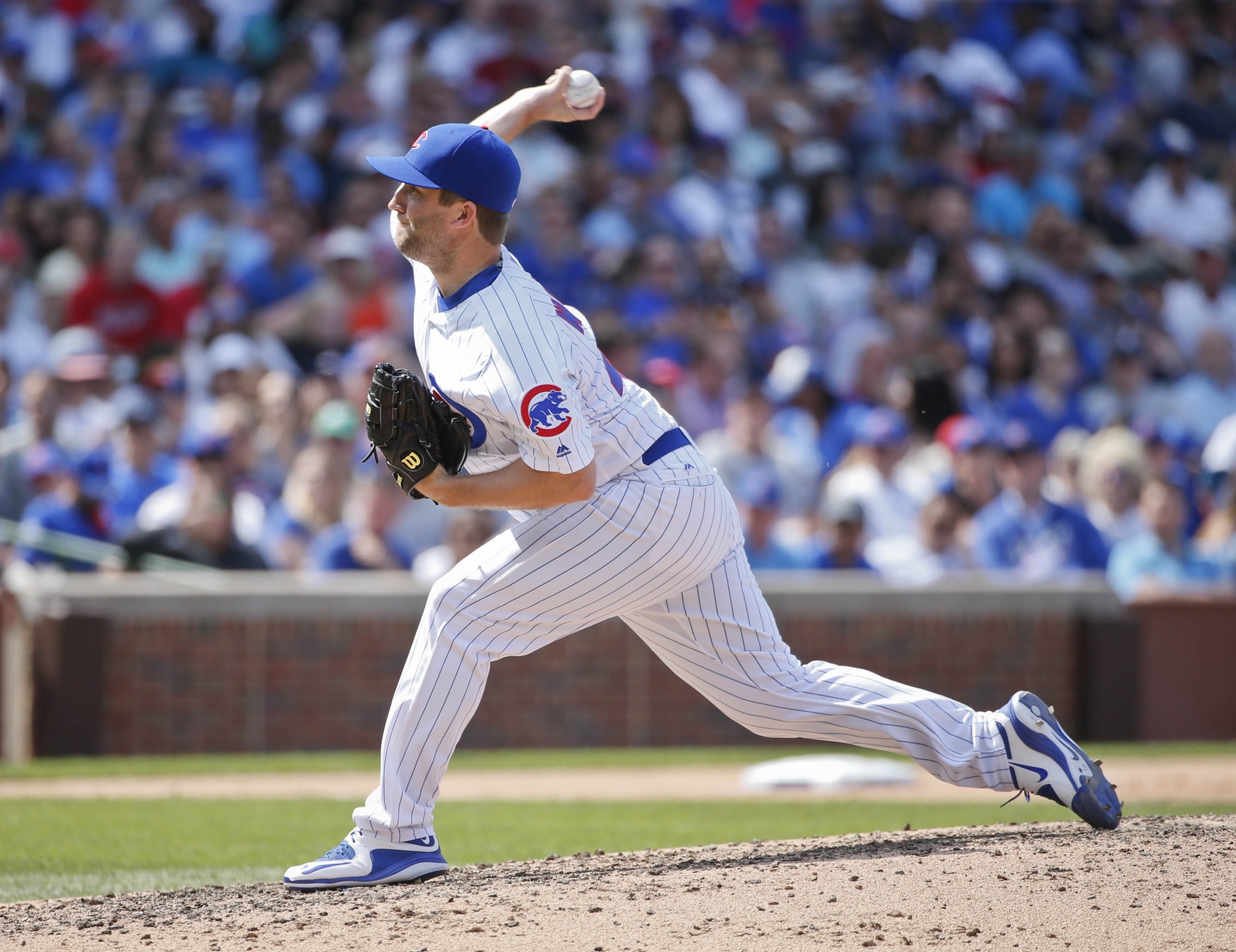I was going to use this space to simply lay out a detailed explanation of what’s been off about Adam Warren lately. I had numbers and everything. And then the Cubs announced that he was being sent to Triple-A to stretch out and get ready for a spot start coming up, and suddenly it seemed so meaningless. But I have a duty to entertain you, and since you probably aren’t interested in me reciting Shakespeare or my best oyster recipes, let’s go ahead and look a little more closely at Warren.
Warren, who was acquired from the New York Yankees in the offseason, was very good in both a starting and relief role for the Yanks, especially after a bit of a slow start. There was a stretch in the middle of last season when Masahiro Tanaka was on the disabled list that Warren was their most reliable starting pitcher. He got even better out of the bullpen, bumping up his strikeouts and lowering his walks. Check out his splits from 2015.
Those relief numbers are something that the Cubs haven’t seen from Warren yet. For a brief reminder, Warren has five pitches, but this year has only really thrown four of them consistently—a four-seam fastball, a slider, a change-up, and a curveball. The four-seam fastball averages around 93 mph with small amounts of movement, and in general isn’t a great pitch. But the slider, change, and curve have been very good for him in his career. A quite note from a look at his secondary pitches earlier this year:
“In 620 at-bats in Warren’s career against his slider, change-up, and curveball, hitters have put up just a .198 batting average with a .285 slugging percentage. To simply compare, batters have hit .299 and slugged .480 against his fastball and sinker in 448 at-bats. It’s not just that he’s getting more swings-and-misses on these pitches, too. The average exit velocity on his slider last year was 85.7 mph and 88.4 on his change-up, while his fastball hit 93.5 miles per hour on average. Even the balls in play, which with Warren will always be a part of the discussion, are hit with weaker contact on his three best pitches.”
In his last 10 games with the Cubs, Warren tossed 10 innings with 15 hits allowed, four walks and just four strikeouts with a flat 9.00 ERA. What went wrong? One thing we can point at is the slider, which he tossed in the zone fairly well last season, allowing just a .357 slugging percentage on such pitches. This season, batters are slugging .809 on sliders in the zone off Warren.
That screams of a few bad pitches missing their intended locations, and the rest of the numbers seem to agree. Against Warren’s slider, hitters are just 7-for-32 this season but have collected five extra-base hits, including three home runs—after allowing just one homer off the slider last season. He’s not striking a lot of guys out, with his K% on the pitch down from 24.8 to 9.3. It’s a small sample, but it’s been a problem.
Another problem with Warren has been the fastball usage. He’s thrown a two-seam fastball in the past but he’s pretty much scrapped it so far this season, and with good reason. Batters are slugging .641 in 145 at-bats off the two-seamer in Warren’s career—that was not a typo. His four-seamer is better, but it’s certainly hittable—it comes with a career .428 slugging percentage. With good options outside of his fastball, it’s a wonder that he’s thrown the heater over 40 percent of the time this year for a .290 batting average and .447 slugging percentage.
There’s a decent chance that spending some time stretching out and throwing more innings in a less stressful setting will allow Warren to work out any kind of control problems he’s having, as well as opening up the opportunity for him to utilize more of his repertoire. With a few spots in the starting rotation possibly opening up over the next two seasons—as it’s no sure thing that Jake Arrieta, Jason Hammel, or John Lackey are around after 2017—making this move now might be in everyone’s best interest.
Warren made 17 starts for the New York Yankees last season, making a trip to the bullpen mid-season before bouncing back into the rotation in September. Starting could be the more valuable role for Warren in the long run, and interestingly enough it’s the job the Cubs have told him to be prepared for since they acquired him. Here’s an interesting quote from Warren back at the Cubs Convention last January:
“Obviously, I want to start. But I’ve pitched out the bullpen successfully as well. Again, this is a win-now mentality with this team so whatever we have to do to do that. They said they got me to be a starter, whether or not it’s this year, we’ll see. They’re giving me the opportunity to prove myself in spring training to be a starter, but I’m not unhappy being in the bullpen.”
True to their word as always, the Cubs’ front office is giving Warren a shot to prepare as a starting pitcher. With such excellent secondary pitches and a decent, mid-90s fastball, you can only wonder what pitching coach Chris Bosio could do with an arm like Warren’s. Whether he does much more than give them a few spot starts and pitch in long relief the rest of this season remains to be seen, but that’s probably not the biggest takeaway here. Warren’s future with the Cubs appears to be as a starting pitcher, and that could end up being a very smart move.
Lead photo courtesy Kamil Krzaczynski—USA Today Sports.

